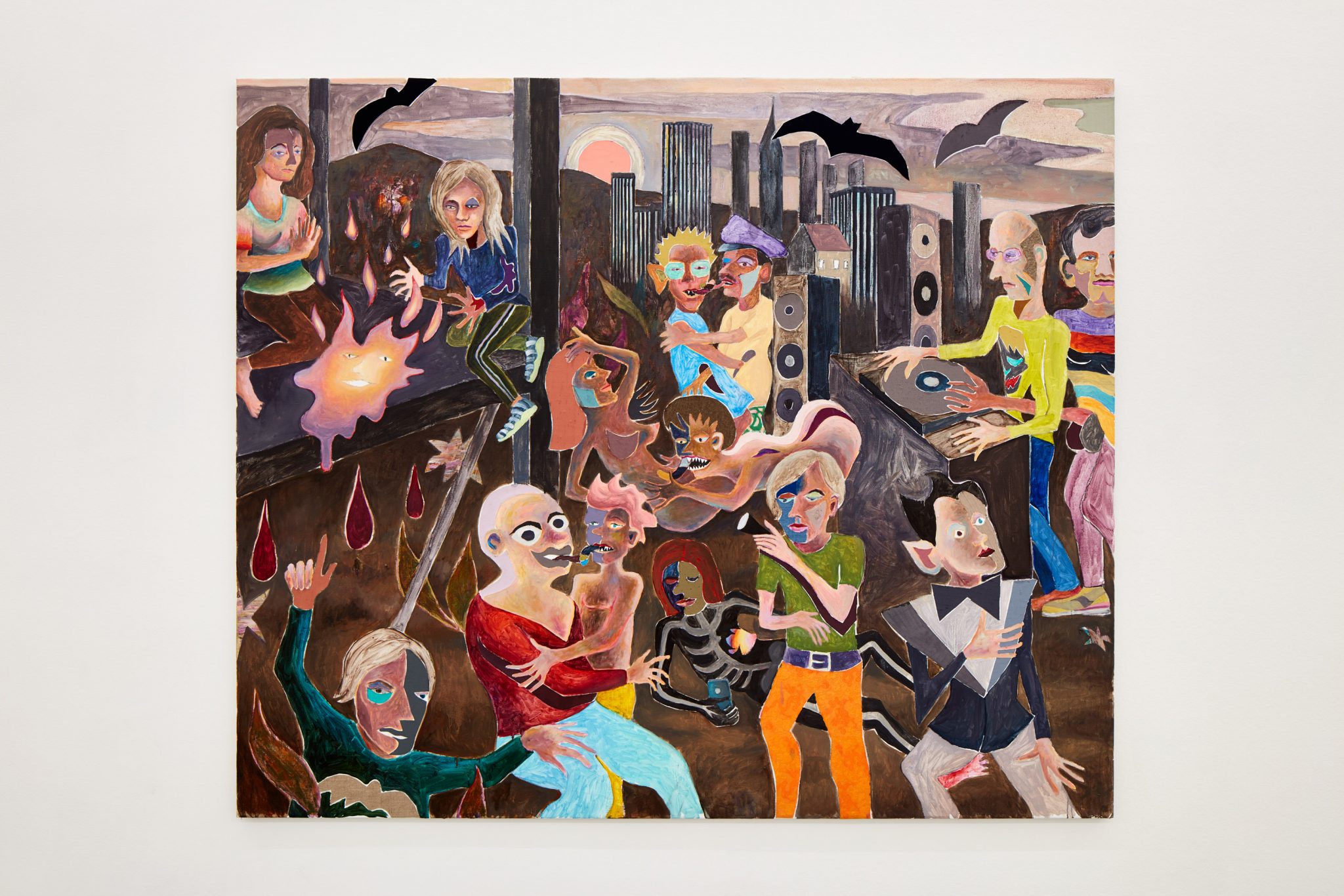19/11 - 15/01, 2015
DIZIONARIO DI PITTURA
ARMIN BOEHM, b. 1972, Aachen, Germany. Boehm’s visual concepts often refer to avant-garde literary movements from the early 20th century, he revives the question of the definition and contextualization of mankind and human thought found therein and brings it up to date using the means of paintings. In his compositional practice the artist creates sceneries in which the materiality of the depicted motifs evolves in the layering of shape, color and collaged elements.
ALICE BROWNE, b. 1986, Oxford UK, Starting a painting opens up manifold possibilities, fantasies of what could be. The defined space of the paper or canvas provides a fixed viewpoint from which the space can be flattened out ahead or tilted forward. Shapes obscure one another like interfering objects in front of a camera lens, or are slotted into place like stage sets. Classic architectural columns and passageways, industrial structures, minimalist artworks and rocks are references that repeatedly appear. Painting on different sizes changes the register of perception and allows an exploration of different volumes of space.
ALLISON KATZ, b. 1980 Montreal, Canada, makes paintings, both figurative and abstract. The New York based artist is also known to make sculptures, ceramics and the occasional performance, as well as posters for his own exhibitions, all of which are intimately linked to her ongoing inquiry into the conventions and history of Western painting. “A rumor of flesh informs the surrogates, cyphers and set-ups that populate the paintings. Consider it the staging of a disappearance in full-view. Fluid membranes or concrete divisions compress the additions, shifts and removals that structure the painting. The presence of another motif entreats as a shadow or blemish, corrupting.” Inverting frivolity. Skew, distort, perspective, warp. Commands in Photoshop that creep into the analog brush mark. The body is a rumor always, but one that informs materiality. Hyper-inflated, bruised, overripe– metaphors for currency, painting, figure” (Allison Katz).
ANDREA KVAS, b. 1986 Trieste, Italy, merges an instinctive and playful approach to painting with an analysis and reconsideration of the codes that distinguish this discipline. Radicalizing, deconstructing and reconstructing in particular the relationship between paint and supports, his pictorial research calls for different fruition schemes; an attitude that led Kvas to find intersections with sculptural and relational practices. Painting is not intended merely as an object of contemplation, but as an instrument to set active dialogues with other objects, environments and the public, aiming to emphasize the contingence of materiality.
ANNA OSTOYA, b. 1978 Krakow, Poland. In her conceptual practice, which incorporates photomontage, painting and writing, Ostoya revisits the histories of lesser-known avant-garde movements in East-Central Europe in parallel with their well-known Western counterparts, pairing pseudomorphic (visually similar) subjects in compelling new images. Using the photographic image as purveyor of memory and symbol of modern culture, Ostoya opens history to uncharted narrative paths. The images in the two works presented in the show were randomly selected by the artist from international newspapers from 2011. Ostoya cut the newspaper images in stripes, scanned them and printed on archival paper. The aim of this kind of work is to represent different news covered by media: politics, sports and social events.
BERND RIBBECK, b.1974, Berlin. The modest format of Bernd Ribbeck’s paintings is in marked contrast to a sense of expansiveness that registers by way of the pulse of color, heat and light they generate. He references architectural history, the structures of both modern and Gothic churches, particularly interior spaces that have great height and volume and are meant to cover wonder and awe. The paintings, usually close to head size and hung low, engage the viewer one-on-one. Ribbeck’s color is gossamer, lending a transparency to forms that are layered and intersecting and seem to be in a state of flux. Coats of varnish and lacquer are sometimes applied, giving the colour a luminosity that recalls the way light passes through stained glass, or refracts from the facets of a gemstone.
FRANCESCO JOAO SCAVARDA, 1987 Milan, Italy. Scavarda grew up between the Brazilian state of Pará, at the foot of the Amazon rainforest, and the coast of Lago Maggiore in Northern Italy. The scenarios evoked by these two places coexist in the artist’s soul without causing any conflict, but rather favoring the development of a peacefully holistic, generalistic, globalized vision. The art of Scavarda follows the tradition of Pop Art, especially in its European declination—the art of Thomas Bayrle, Peter Roehr, Sir Eduardo Paolozzi, where icons serve the construction of more complex images. The substantial swerve is that the artist’s concern isn’t to comment on the ordinary, the popular, the trivial, but rather to wallow in the universal visual imagery. In his works, every personal experience is generalized and its representation inevitably entails the recourse to figurative clichés. Facing the magma of globalized images, Scavarda avoid any highbrow interpretation, and prefers indeed to dice with them.
MATTEO CALLEGARI, b. 1979 Latisana, Italy. He translates the grit and neon of his adopted New York City milieu into large-scale compositions that are both spare and exuberant. His works always have as a starting point an image, a figurative element that the artist seeps and turns in a painting. Sometimes, the images is filtered, reduced, projected, broken in two different colors and then reinforced with the performative act. This process never hides the starting image completely, so the works have both the abstract and figurative part. The two elements are linked together and smoothly intersect one with the other. This reinforces Callegari’s idea of painting as a state of mind, limitless and with infinite possibility of interpretation.
NED VENA, b. 1982 Boston. Vena’s background is in street art and commercial printing, and his style is rooted in the art history of New York, where he lives. He has always created paintings through stencils produced on the kind of digital plotting machine used for such purposes. The technology was developed to efficiently repeat images, symbols or text onto posters or walls, but Vena subverts this expectation by using it to print non-signifying geometric patterns onto canvas. However, what really sets the artist apart is his use of unconventional materials. Long gone are acrylics and oils, instead replaced by industrial-grade rubber and vinyl. Using spray cans and adhesive, each painting is produced using a unique set of processes, executed with the aid of an industrial cartographic machine.
SOPHIE BUENO-BOUTELLIER, b. 1974 Toulouse, France. Various cultural reference and artistic styles converge in the work of French artist Sophie Bueno-Boutellier that she confers to form with great subtlety. In their minimalist aesthetics her works evoke historical minimalism and, with their often “poor” materiality, recall Arte Povera, moving on the segue between categories of painting, sculpture, ready-made and installation. Appeals to the Aesthetics of minimalism can be interrupted by the evident craftwork of the artist who for examples paints canvases monochrome with pale colors, folds them accurately and applies them to the wall like a piece of clothing, thus making the fabric become a sculpture. The works not only manifest material or medial references to art history as well as immanent potential of affect that derives from the haptic quality of many of their elements.
THOMAS KRATZ, b. 1972 Waiblingen, Germany, In many respects, the work of Thomas Kratz defies summation. Kratz operates across a variety of media, and his approaches can appear cyclical – not necessarily generating- an ordered structure but one in which reoccurring facets are placed alongside one another across spaces, exhibitions and works. Objects, both constructed and pre-existing, are reincarnated throughout Kratz’s work. He creates a language of objects and gestures that is highly diverse, but which in total speaks of the contingencies and rituals of art.
BRADLEY KRONZ, b.1986, New York. Kronz’s work includes drawings, photographs and sculptures characterized by an aesthetic specificity and DIY approach. Reflecting on the social and economic conditions of an art object and its resulting conventions Kronz’s work functions to reorder the dominant logic. Reconsidering the material conditions that give rise to common forms but also his own precarious status as a subject within the field of contemporary art.
ARMIN BOEHM, b. 1972, Aachen, Germany. Boehm’s visual concepts often refer to avant-garde literary movements from the early 20th century, he revives the question of the definition and contextualization of mankind and human thought found therein and brings it up to date using the means of paintings. In his compositional practice the artist creates sceneries in which the materiality of the depicted motifs evolves in the layering of shape, color and collaged elements.
ALICE BROWNE, b. 1986, Oxford UK, Starting a painting opens up manifold possibilities, fantasies of what could be. The defined space of the paper or canvas provides a fixed viewpoint from which the space can be flattened out ahead or tilted forward. Shapes obscure one another like interfering objects in front of a camera lens, or are slotted into place like stage sets. Classic architectural columns and passageways, industrial structures, minimalist artworks and rocks are references that repeatedly appear. Painting on different sizes changes the register of perception and allows an exploration of different volumes of space.
ALLISON KATZ, b. 1980 Montreal, Canada, makes paintings, both figurative and abstract. The New York based artist is also known to make sculptures, ceramics and the occasional performance, as well as posters for his own exhibitions, all of which are intimately linked to her ongoing inquiry into the conventions and history of Western painting. “A rumor of flesh informs the surrogates, cyphers and set-ups that populate the paintings. Consider it the staging of a disappearance in full-view. Fluid membranes or concrete divisions compress the additions, shifts and removals that structure the painting. The presence of another motif entreats as a shadow or blemish, corrupting.” Inverting frivolity. Skew, distort, perspective, warp. Commands in Photoshop that creep into the analog brush mark. The body is a rumor always, but one that informs materiality. Hyper-inflated, bruised, overripe– metaphors for currency, painting, figure” (Allison Katz).
ANDREA KVAS, b. 1986 Trieste, Italy, merges an instinctive and playful approach to painting with an analysis and reconsideration of the codes that distinguish this discipline. Radicalizing, deconstructing and reconstructing in particular the relationship between paint and supports, his pictorial research calls for different fruition schemes; an attitude that led Kvas to find intersections with sculptural and relational practices. Painting is not intended merely as an object of contemplation, but as an instrument to set active dialogues with other objects, environments and the public, aiming to emphasize the contingence of materiality.
ANNA OSTOYA, b. 1978 Krakow, Poland. In her conceptual practice, which incorporates photomontage, painting and writing, Ostoya revisits the histories of lesser-known avant-garde movements in East-Central Europe in parallel with their well-known Western counterparts, pairing pseudomorphic (visually similar) subjects in compelling new images. Using the photographic image as purveyor of memory and symbol of modern culture, Ostoya opens history to uncharted narrative paths. The images in the two works presented in the show were randomly selected by the artist from international newspapers from 2011. Ostoya cut the newspaper images in stripes, scanned them and printed on archival paper. The aim of this kind of work is to represent different news covered by media: politics, sports and social events.
BERND RIBBECK, b.1974, Berlin. The modest format of Bernd Ribbeck’s paintings is in marked contrast to a sense of expansiveness that registers by way of the pulse of color, heat and light they generate. He references architectural history, the structures of both modern and Gothic churches, particularly interior spaces that have great height and volume and are meant to cover wonder and awe. The paintings, usually close to head size and hung low, engage the viewer one-on-one. Ribbeck’s color is gossamer, lending a transparency to forms that are layered and intersecting and seem to be in a state of flux. Coats of varnish and lacquer are sometimes applied, giving the colour a luminosity that recalls the way light passes through stained glass, or refracts from the facets of a gemstone.
FRANCESCO JOAO SCAVARDA, 1987 Milan, Italy. Scavarda grew up between the Brazilian state of Pará, at the foot of the Amazon rainforest, and the coast of Lago Maggiore in Northern Italy. The scenarios evoked by these two places coexist in the artist’s soul without causing any conflict, but rather favoring the development of a peacefully holistic, generalistic, globalized vision. The art of Scavarda follows the tradition of Pop Art, especially in its European declination—the art of Thomas Bayrle, Peter Roehr, Sir Eduardo Paolozzi, where icons serve the construction of more complex images. The substantial swerve is that the artist’s concern isn’t to comment on the ordinary, the popular, the trivial, but rather to wallow in the universal visual imagery. In his works, every personal experience is generalized and its representation inevitably entails the recourse to figurative clichés. Facing the magma of globalized images, Scavarda avoid any highbrow interpretation, and prefers indeed to dice with them.
MATTEO CALLEGARI, b. 1979 Latisana, Italy. He translates the grit and neon of his adopted New York City milieu into large-scale compositions that are both spare and exuberant. His works always have as a starting point an image, a figurative element that the artist seeps and turns in a painting. Sometimes, the images is filtered, reduced, projected, broken in two different colors and then reinforced with the performative act. This process never hides the starting image completely, so the works have both the abstract and figurative part. The two elements are linked together and smoothly intersect one with the other. This reinforces Callegari’s idea of painting as a state of mind, limitless and with infinite possibility of interpretation.
NED VENA, b. 1982 Boston. Vena’s background is in street art and commercial printing, and his style is rooted in the art history of New York, where he lives. He has always created paintings through stencils produced on the kind of digital plotting machine used for such purposes. The technology was developed to efficiently repeat images, symbols or text onto posters or walls, but Vena subverts this expectation by using it to print non-signifying geometric patterns onto canvas. However, what really sets the artist apart is his use of unconventional materials. Long gone are acrylics and oils, instead replaced by industrial-grade rubber and vinyl. Using spray cans and adhesive, each painting is produced using a unique set of processes, executed with the aid of an industrial cartographic machine.
SOPHIE BUENO-BOUTELLIER, b. 1974 Toulouse, France. Various cultural reference and artistic styles converge in the work of French artist Sophie Bueno-Boutellier that she confers to form with great subtlety. In their minimalist aesthetics her works evoke historical minimalism and, with their often “poor” materiality, recall Arte Povera, moving on the segue between categories of painting, sculpture, ready-made and installation. Appeals to the Aesthetics of minimalism can be interrupted by the evident craftwork of the artist who for examples paints canvases monochrome with pale colors, folds them accurately and applies them to the wall like a piece of clothing, thus making the fabric become a sculpture. The works not only manifest material or medial references to art history as well as immanent potential of affect that derives from the haptic quality of many of their elements.
THOMAS KRATZ, b. 1972 Waiblingen, Germany, In many respects, the work of Thomas Kratz defies summation. Kratz operates across a variety of media, and his approaches can appear cyclical – not necessarily generating- an ordered structure but one in which reoccurring facets are placed alongside one another across spaces, exhibitions and works. Objects, both constructed and pre-existing, are reincarnated throughout Kratz’s work. He creates a language of objects and gestures that is highly diverse, but which in total speaks of the contingencies and rituals of art.
BRADLEY KRONZ, b.1986, New York. Kronz’s work includes drawings, photographs and sculptures characterized by an aesthetic specificity and DIY approach. Reflecting on the social and economic conditions of an art object and its resulting conventions Kronz’s work functions to reorder the dominant logic. Reconsidering the material conditions that give rise to common forms but also his own precarious status as a subject within the field of contemporary art.
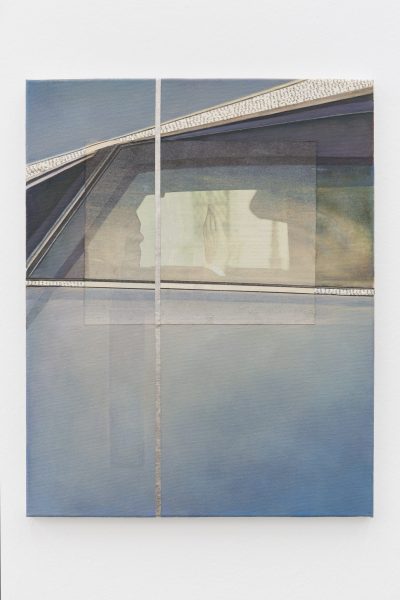 Anna Ostoya, Untitled (Blue Car), 2013
Anna Ostoya, Untitled (Blue Car), 2013
oil, newsprint and palladium leaf on canvas
50×40 cm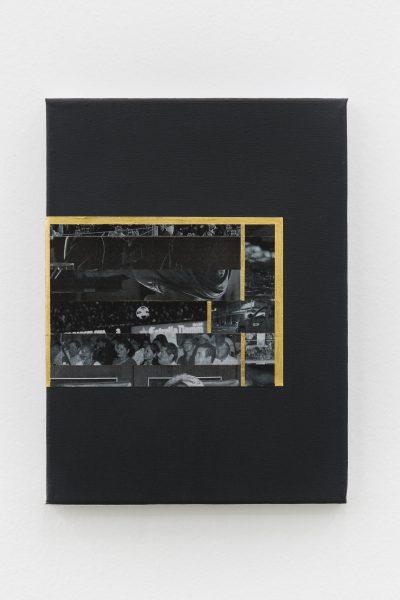 Anna Ostoya, Balls 1, 2013
Anna Ostoya, Balls 1, 2013
acrylic, archival print and golden leaf on canvas
30,5×23 cm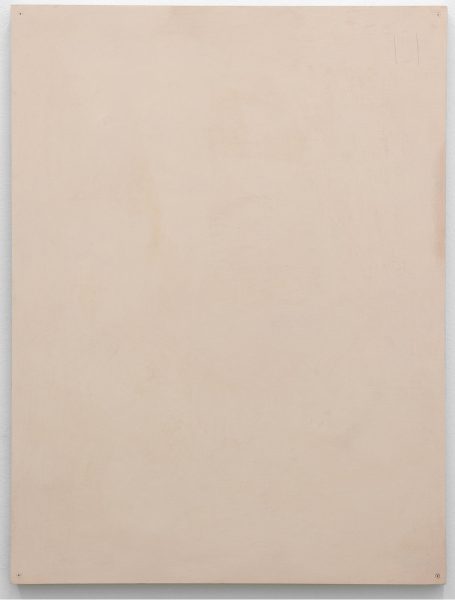 Thomas Kratz, Nude, 2012
Thomas Kratz, Nude, 2012
pastel on aluminium
80×60 cm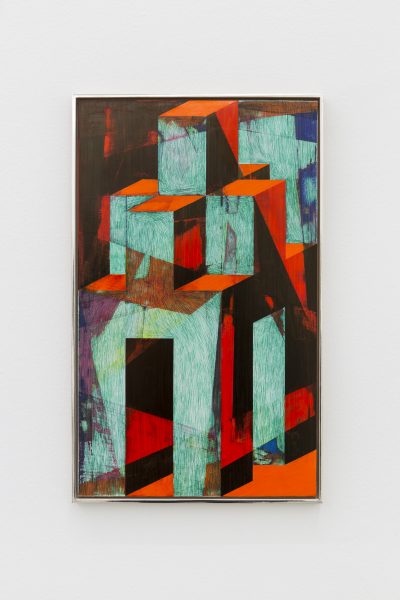 Bernd Ribbeck, Untitled, 2014
Bernd Ribbeck, Untitled, 2014
acrylics, ballpointpen, pigmented marker on MDF
50×30 cm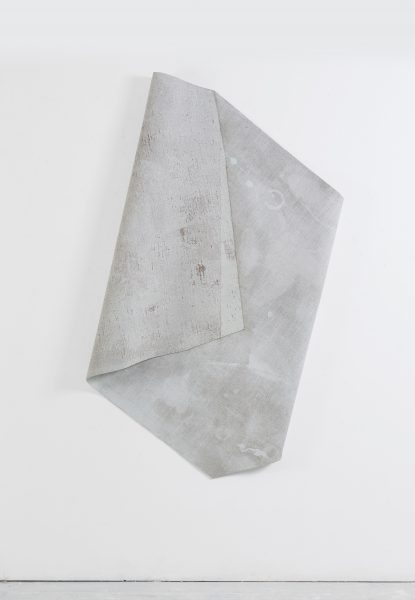 Sophie Bueno-Boutellier, Green Cardamon, 2014
Sophie Bueno-Boutellier, Green Cardamon, 2014
acrylic, oxidizer gold pigment on canvas
185×108×15 cm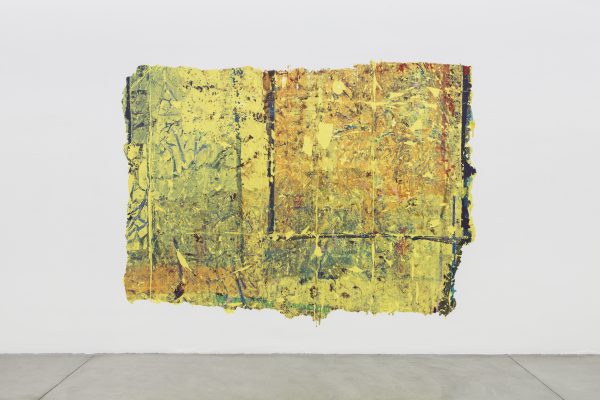 Andrea Kvas, Untitled, 2014
Andrea Kvas, Untitled, 2014
wallpainting
221×308 cm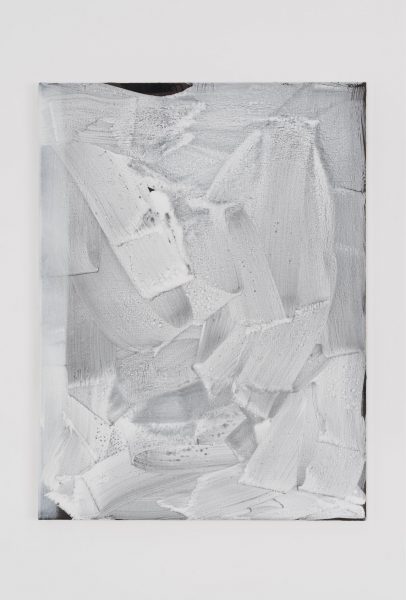 Thomas Kratz, Untitled, 2013
Thomas Kratz, Untitled, 2013
acrylic and spray paint on canvas
80×60 cm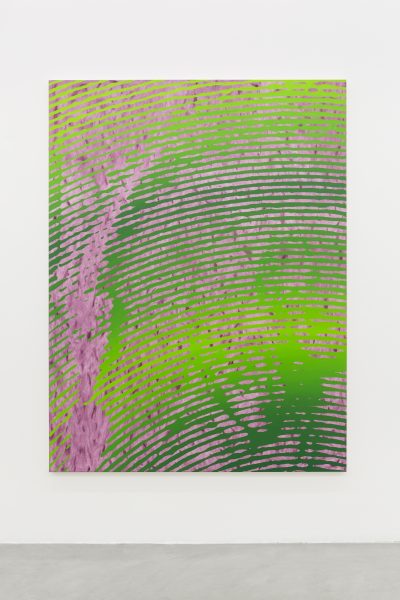 Matteo Callegari, Prelude for SDG (minus zero), 2014
Matteo Callegari, Prelude for SDG (minus zero), 2014
oil on canvas
218×165 cm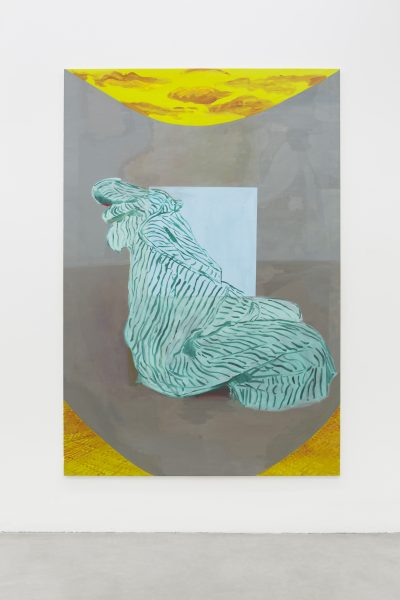 Allison Katz, Desire is a solvent, occasionally, rarely, a glue, 2014
Allison Katz, Desire is a solvent, occasionally, rarely, a glue, 2014
oil on canvas
274×183 cm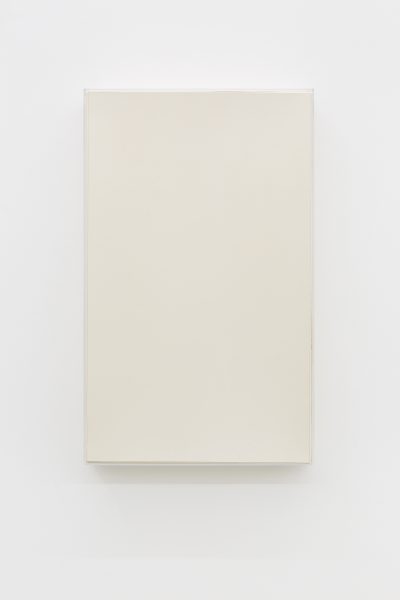 Bradley Kronz, Black Dress, 2014
Bradley Kronz, Black Dress, 2014
Acrylic glass, cardstock, photograph, fasteners
100×61 cm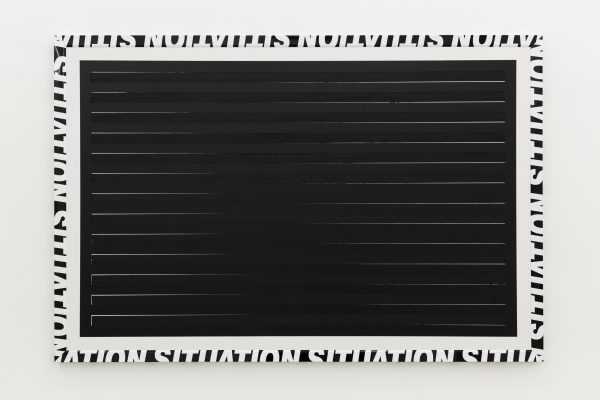 Ned Vena, Untitled, 2014
Ned Vena, Untitled, 2014
Acrylic, polyurethane and rubber on canvas, artists frame
146×213×4,5 cm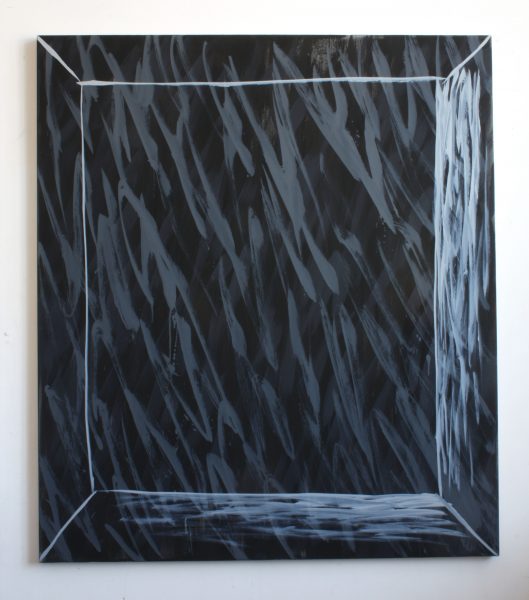 Alice Browne, Cloacked, 2014
Alice Browne, Cloacked, 2014
oil on canvas
126×110 cm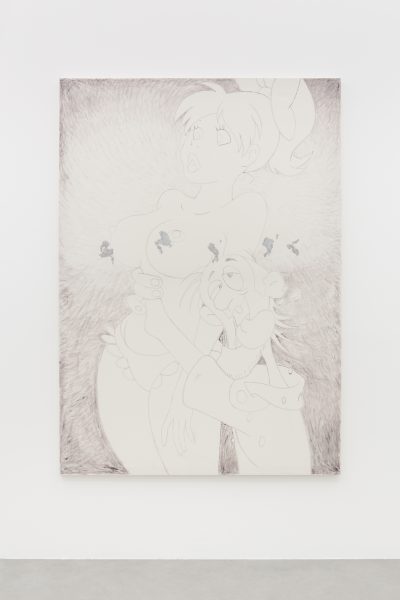 Francesco Joao Scavarda, Chicks, 2014
Francesco Joao Scavarda, Chicks, 2014
gouache on canvas
204×144 cm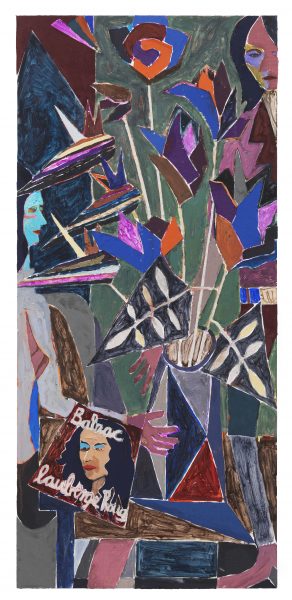 Armin Boehm, Untitled, 2014
Armin Boehm, Untitled, 2014
oil, paper, fabric on board
120×55 cm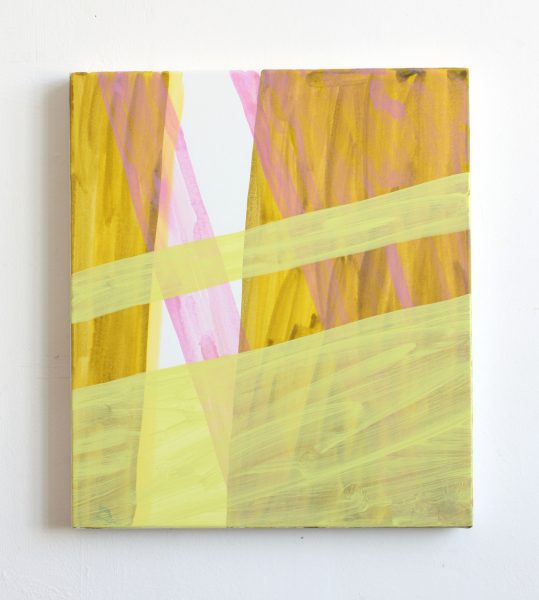 Alice Browne, Intersect, 2014
Alice Browne, Intersect, 2014
acrylic and oil on canvas
25×25 cm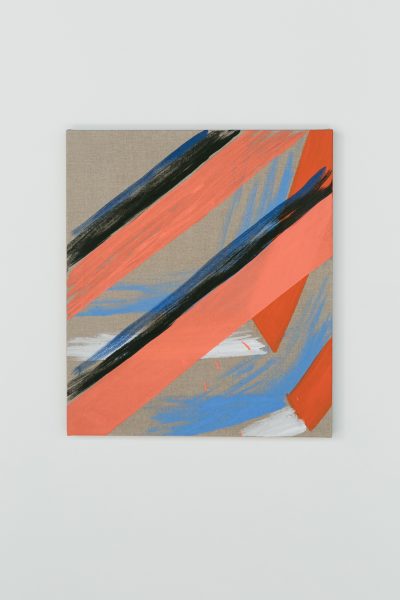 Alice Browne, Transform, 2014
Alice Browne, Transform, 2014
oil on canvas
40×35 cm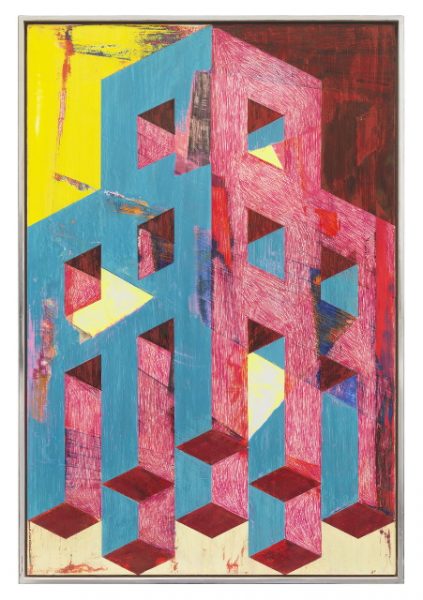 Bernd Ribbeck, Untitled, 2014
Bernd Ribbeck, Untitled, 2014
acrylics, ballpointpen, pigmented marker on MDF
45×30 cm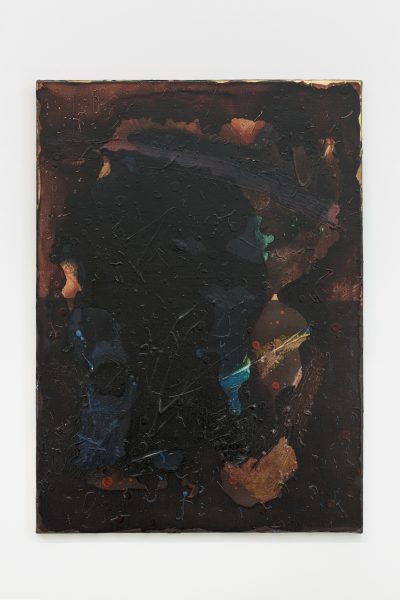 Andrea Kvas, Untitled, 2014oil on canvas
Andrea Kvas, Untitled, 2014oil on canvas
70×50 cm































